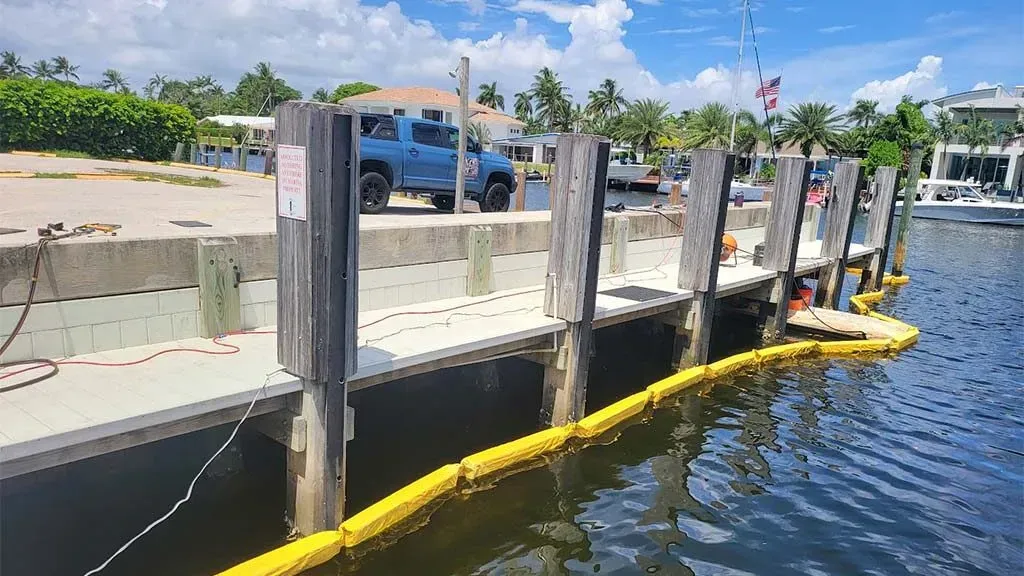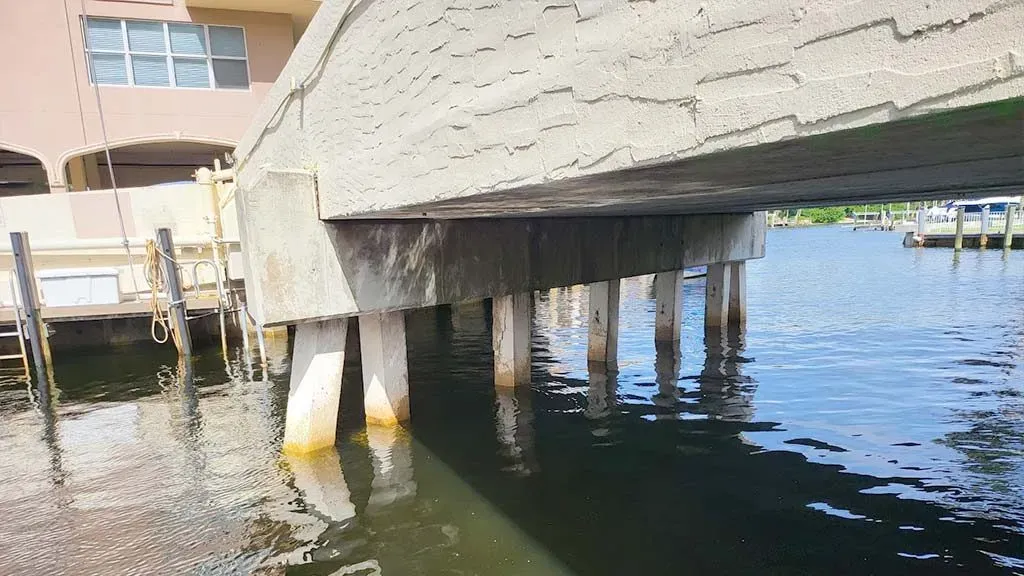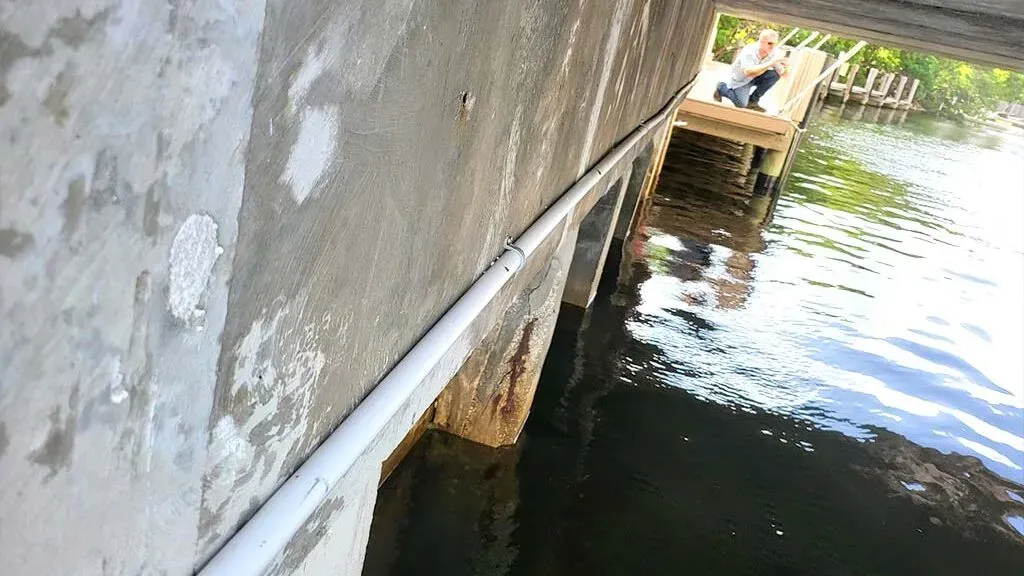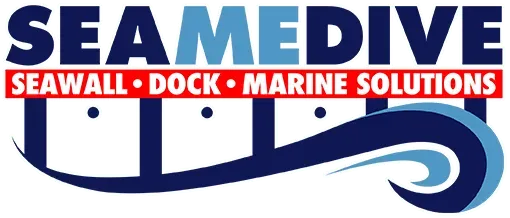Protecting your waterfront property investment through regular seawall maintenance is crucial, as it requires understanding the factors impacting your seawall’s longevity. At Sea Me Dive, we understand that a seawall isn’t just a barrier; it’s a vital line of defense against erosion and the relentless forces of nature. Even the sturdiest seawall can succumb to damage without proper care, leading to costly repairs and potential property loss.
In this blog post, we’ll explore five critical aspects of seawall maintenance that are often overlooked yet play a significant role in preserving its integrity.
Understanding these key elements and implementing proactive maintenance strategies can mean the difference between a healthy, functioning seawall and a major structural headache down the road.
Ready to learn how to safeguard your investment and protect your waterfront paradise?
Time to dive in with Sea Me Dive!

1. Soil Stability
Soil instability around a seawall can lead to significant structural issues. Erosion and the washing out of soil can cause the foundation to weaken, leading to instability. This is often evident when sand begins to erode from the seawall’s base.
- Consequences of Instability:
- Exposure of Deadman Anchors: The anchors that hold the seawall back (often referred to as “deadmen”) become exposed as the soil erodes.
- Seawall Shifting and Cracking: The seawall itself can start to shift, leading to the appearance of hairline cracks on the cap, indicating structural stress.
Importance: Maintaining soil stability is fundamental to ensuring the longevity and integrity of a seawall. A compromised soil foundation weakens the anchor system and can lead to significant structural damage.
Recommendations:
- Regularly inspect the area surrounding the seawall for signs of erosion or instability. Look for changes in soil levels, the presence of exposed roots, or the movement of sand. Sea Me Dive takes note of these issues during our routine seawall inspections.
- Promptly address any signs of instability. This may include reinforcing the soil with retaining walls, riprap, or other appropriate materials to prevent further erosion.
- Repair any damaged sections of the soil foundation to restore stability and prevent further issues.
2. Pressure Relief/Weep Hole System
The pressure relief system, often referred to as weep holes, is a critical component for managing hydrostatic pressure that builds up behind seawalls due to water accumulation. It allows the water to drain out, preventing damaging pressure buildup.
- Consequences of a Failed System: If the pressure relief/weephole system becomes clogged, damaged, or is not properly functioning, excess water can build up behind the seawall. This can lead to:
- Increased hydrostatic pressure, potentially causing the seawall to bow or crack.
- Exacerbation of soil erosion and instability.
- Compromised structural integrity of the seawall.
Importance: Maintaining a functional pressure relief system is crucial for protecting your seawall from the damaging effects of hydrostatic pressure.
Recommendations:
- Regularly inspect the pressure relief/weephole system for blockages or damage.
- Clean or repair as needed to ensure proper drainage.
- Consider installing a more advanced pressure relief system, such as a Jet Filter system, for optimal protection. Sea Me Dive have been using Jet Filters for years and have found nothing better at helping with hydrostatic pressure relief!
Overall Impact of Neglect:
- Neglecting both soil stability and pressure relief can result in significant structural compromise and shifting of the seawall, leading to accelerated deterioration.
- When a seawall reaches this stage, complete removal and replacement often become necessary, a process that can be significantly more costly than regular maintenance (estimated at over 80% more).
3. Regular Inspections
Regular inspections of the seawall are crucial to identify potential issues before they become major problems. Failure to inspect the seawall regularly can lead to unnoticed damage, erosion, or corrosion.
- Consequences of Neglect:
Undetected Damage: Cracks, erosion, or corrosion can go unnoticed, leading to structural weakness and potential failure.
Importance: Regular inspections help ensure the seawall remains secure and functional, protecting adjacent properties and preventing costly repairs.
Recommendations:
- Schedule regular inspections with Sea Me Dive to examine the seawall’s condition.
- Check for signs of damage, wear, and tear, including cracks, erosion, or corrosion.
- Address any issues promptly to prevent further deterioration.
4. Repair Any Damage Promptly
Promptly addressing any damage or issues with the seawall is crucial to prevent further deterioration and more costly repairs down the line. Neglecting repairs can lead to structural weakness and potential failure.
- Consequences of Delayed Repairs
Structural Weakness: Unaddressed damage can lead to structural weakness, compromising the seawall’s integrity.
Importance
Prompt repairs ensure the seawall remains secure and functional, protecting adjacent properties and preventing costly repairs.
Recommendations:
- Address any damage or issues promptly, consulting a qualified professional if necessary.
- Assess the extent of the damage and develop a repair plan to restore the seawall’s integrity.
- Complete repairs promptly to prevent further deterioration
Sea Me Dive is dedicated to helping your wall and property be as safe as possible and maintenance is just the start! Call today: 754-265-7115

Seawall FAQs
What is Seawall Repair?
Seawall repair involves addressing issues like bowing, leaning, cracking, or deterioration in seawalls. These structures are vital for protecting coastal properties from erosion caused by water and wave action. Repair methods include polyurethane and epoxy injections, soil stabilization, grouting to fill voids, and sometimes installing new panels in front of existing walls to reinforce them and prevent further damage.
What is Seawall Erosion Control?
Seawall erosion control involves constructing solid barriers along coastlines to shield inland areas from wave action and erosion caused by sea-level rise and storm surges. These structures, typically made of concrete or stone, are crucial for safeguarding coastal communities, infrastructure, and ecosystems from the damaging effects of coastal erosion. Seawalls help stabilize shorelines and prevent loss of land by redirecting wave energy back into the sea, thereby reducing erosion and flood risks along vulnerable coastal areas.
Sea Me Dive for Seawall Maintenance in Florida
Sea Me Dive offers expert seawall maintenance services in Florida, ensuring the longevity and structural integrity of waterfront properties. With a team of certified professionals, they provide comprehensive inspections, timely repairs, and innovative solutions tailored to the unique challenges posed by the marine environment. Serving residential, commercial, and governmental clients across South Florida, Sea Me Dive is dedicated to protecting valuable investments against the effects of erosion and water pressure.
How often should I inspect my seawall for damage?
You should visually inspect your seawall at least once a year to identify any cracks, crumbling, or damage. More frequent inspections, such as twice yearly (spring and fall) or annually after construction, are recommended to prevent issues from worsening. Sea Me Dive also suggests a professional inspection every 2-3 years for a comprehensive assessment.

How long does a seawall typically last?
A properly maintained seawall can last between 30 to 50 years. However, without proper care, it might require repairs as early as 20 years. Factors like material and environmental conditions also influence its lifespan.
How can I tell if the soil surrounding my seawall is unstable?
You can identify unstable soil around your seawall by observing signs like soil depressions or loss near the structure, movement or shifting of the seawall, and the presence of cracks in the concrete. These indicate potential soil erosion and instability, requiring attention.
Can I install a new pressure relief system myself, or is professional help required?
While some simpler PRV replacements might be DIY-able, installing a new pressure relief system often involves soldering or specialized knowledge. Due to safety concerns and potential code violations, professional help from an expert like Sea Me Dive is often recommended, especially for complex installations.
What is the difference between a seawall and a bulkhead?
While often used interchangeably, seawalls are larger structures designed primarily to protect shorelines from wave action. Bulkheads, in contrast, are vertical structures focused on retaining soil and resisting limited wave forces, often found in marinas or areas with less intense wave activity.
Keep your property safe with Sea Me Dive expert seawall maintenance and repair services in south Florida. Call now: 754-265-7115
